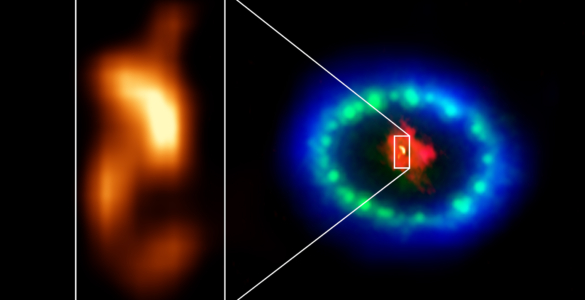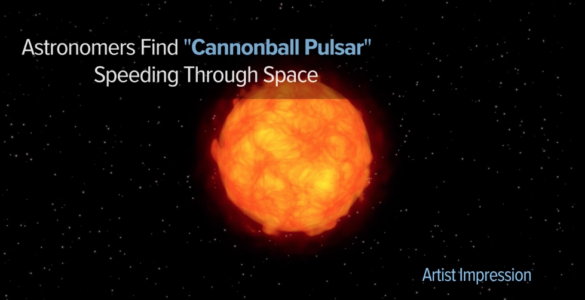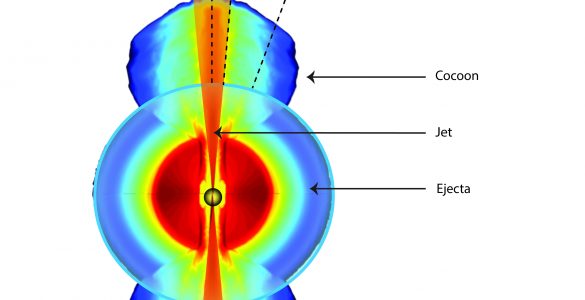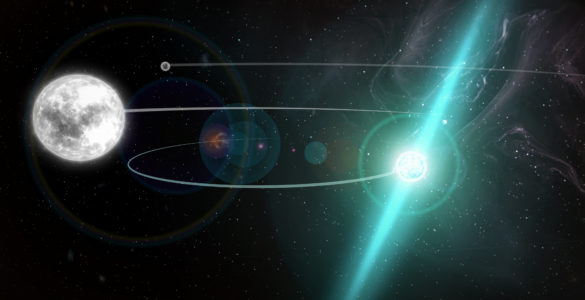How to Weigh a Pulsar
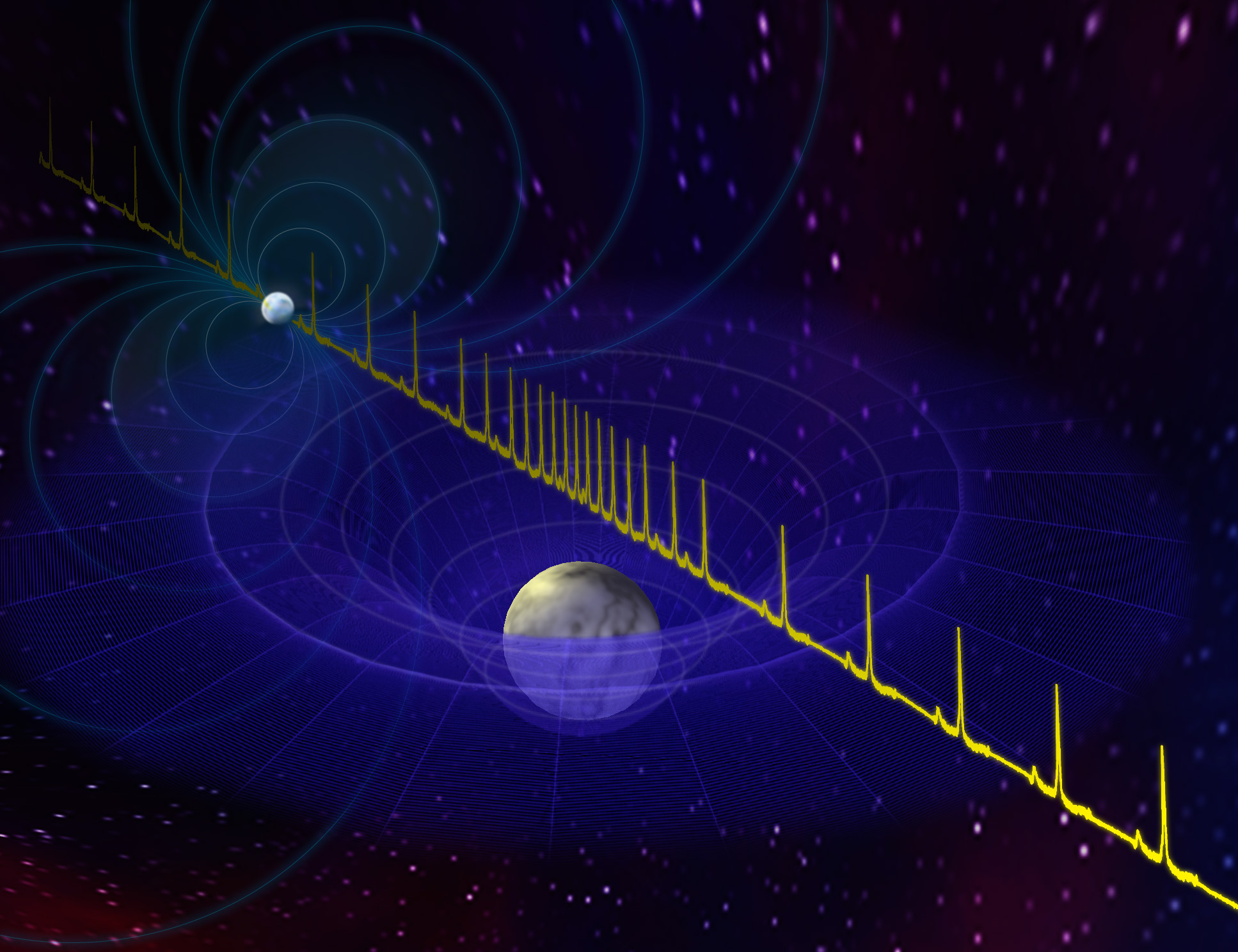
Pulses from a neutron star (rear) are slowed as they pass near the foreground white dwarf star. The effect, known as the Shapiro Delay, is the extra time delay light experiences by traveling past a massive object due to general relativistic time dilation. Spinning 317 times per second, this pulsar (PSR J1614-2230) and its companion white dwarf star complete an orbit in just under nine days. The pair, some 3,000 light-years distant, are in an orbit seen almost exactly edge-on from Earth, which gives astronomers the information they need to make a mass measurement.
Credit: B. Saxton, NRAO/AUI/NSF
Part of Collections:
Image of the Week
Download Image download
Have you reviewed our Media Use Policy?
Yes, continue arrow_circle_right
| Original TIFF | download | ||
| Hi-Res Full-Size | 1935 x 1488 | 671 KB | download |
| Screensize File | 1024 x 787 | download |









